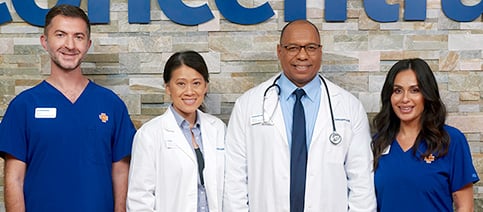
CONCENTRA
Because your employees matter.
Explore our occupational health care services.
Designed to meet the needs of employers and employees nationwide.

A Tradition of Excellence
Concentra leads the industry in outcomes-based occupational health care services. Founded in 1979, Concentra’s 11,000+ colleagues treat more than 50,000 patients a day from 540 medical centers nationwide and 150 onsite clinics at employer locations. We work with companies in a range of industries with employee populations of any size and deliver quality services designed to optimize employee health and safety.




